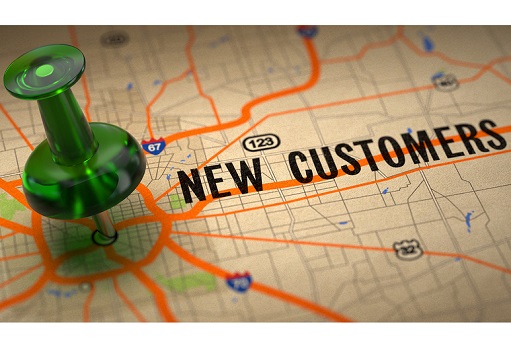
Usman Ghani (December 6, 2016)
Customer journey maps provide insights to the customer experience and give a detailed outlook on areas to focus on. The customer journey map is used to design the experience of a customer, keeping in mind engagement of a company with the customer along the way. Companies can plan their customer journey process by creating maps which work as a visual tool to understand the steps and processes a customer goes through when engaging with a company.
Let’s have a look at four useful tips on how to design a more competitive and impactful customer journey map.
Touchpoints need to be the crux of the plan when designing journey maps. Touchpoints show interactions the customer has with the company at various stages throughout the customer journey. It is essential to study each touchpoint and understand the role it plays in the larger picture. Being aware of your touchpoints and their contribution in the journey can help your business add value and enhance customer experience by fixing glitches and improving customer satisfaction.
Putting yourself in place of the customer and walking through the journey can be a helpful activity carried out by the customer service team to learn about various touchpoints the customer is exposed to. Keeping both major and minor touchpoints in check helps create a more detailed and focused map.
Companies need to use qualitative and quantitative data to figure out emotional impact of each touchpoint on the customer. Customer experience can be heightened by understanding what the customer feels and how they react at each stage in the journey. To learn about what might delight or frustrate customers along the way can be useful information.
Firstly it can help businesses become aware of customer emotions and how they react to different points along the whole path. Knowing these triggers can produce valuable data for the company, which they can use to improve service as well as identify gaps from the company’s end. Understanding each stage of the journey and the level of satisfaction or dissatisfaction it provides the customer is useful insight for the company. The information can be used to restructure the customer journey and reduce frustration faced by the customer and manage loopholes.
In order to create a holistic and thorough customer journey map, it is important to keep all stages of the sales process in check. The company should be able to draw a map that looks clearly at touchpoints in the pre- purchase stage, purchase stage and post sales as well. Designing the map with all the stages in mind can help the company create a more synchronized experience and eliminate fractures between each stage.
This could run from the pre-purchase stage, where the customer is searching for a product or service and gaining information, to during sales, where the customer is actively pursuing purchase by either visiting the store or buying online. Designing the map by keeping all stages in mind and offering a seamless experience between each stage is what will result in an impactful customer journey map.
Lastly the stage of post sales shouldn’t be ignored where the customer might be needing support or assistance from the customer service department of the company. While companies often focus on making sales and getting the customer to the buying stage, it is often the post sales experience that converts a customer to becoming loyal and increases retention rates.
The growing channels of engagement between the company and the customer has led to varying touchpoints. With customers using multiple platforms, channels and devices, it is important to design a customer journey map which aligns all of the above to reach a cohesive customer journey map. Irrespective of channel, the end goal of the journey should be the same across them and should contribute to creating a seamless journey.
Marketers should get input from all the different channels and share data collectively in order to get a broader picture of how customers interact at varying stages of the journey. The metrics for measuring data should be similar across channels so data can be collectively mined and the analytics can be used to analyze and optimize the customer journey. Companies can use this information and generate customer service reports to see how changes in the customer journey map has facilitated the company.
Knowing how customers behave across different channels and what their preferences are, can benefit businesses to improve customer service, by making it user-friendly as well as offer personalization along the journey.

Healthcare workers are entrusted with the great responsibility of caring for people. In order to continually offer comfort and care to people, there are certain skills that healthcare professionals need to master. Of course there are the obvious ones related...
Read More
Creative thinking is one of the most important and sought after soft skills that you need to acquire in an increasingly digital landscape of 2021 and beyond. Creative thinking skills are required in many different job roles to come up...
Read More
Sales are the backbone of any business and great salespeople are an asset for the company. Some people are naturally gifted in the art of persuasive communication and negotiation skills required to convince clients and effectively sell more. However, certain...
Read More